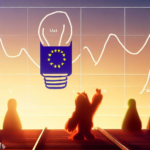In today’s rapidly evolving world, innovation stands as a cornerstone of progress, and the European Union (EU) is no exception. The EU has set its sights on fostering innovation to drive economic growth, improve quality of life, and remain competitive on the global stage. To gauge the effectiveness of these efforts, it’s crucial to employ comprehensive innovation metrics that encapsulate the EU’s journey, progress, and potential.

EU’s Innovation Agenda: A Glimpse into the Future
At the heart of the EU’s innovation agenda lies a multifaceted approach aimed at nurturing creativity, entrepreneurship, and technological advancements. The agenda spans various sectors, from sustainable energy to digital transformation, encompassing policies, funding initiatives, and collaborative frameworks. As we delve deeper, it becomes evident that the EU’s innovation strategy is an intricate tapestry woven with the threads of research, development, and practical implementation.
Creating an Innovation Line: Methodology and Process
To effectively assess the progress of innovation in the EU, a structured approach is essential. One powerful tool in this endeavor is the Innovation Line, a dynamic visual representation that illuminates the evolution of processes, tasks, and roles within an organization. This methodology fosters clear communication between stakeholders and solution providers, ensuring alignment with the overarching innovation agenda.
The process of constructing an Innovation Line involves several pivotal steps:
- Baseline Assessment: Begin by analyzing the existing baseline of processes and tasks. Identify areas where innovation can lead to improved efficiency, effectiveness, or value creation.
- Solution Provider Alignment: Engage solution providers who comprehend the specific gaps and can contribute relevant enhancements. Their understanding of your needs is instrumental in driving meaningful discussions.
- Practitioner Participation: Involve practitioners who possess a deep understanding of the functionality of proposed solutions. Their insights ensure a holistic perspective on the potential impact.
- New Connections and Roles: As innovation-infused tasks emerge, forge new connections between existing processes. Introduce new roles, if necessary, to accommodate evolving requirements.
- Visual Representation: Utilize visual aids like sticky notes and markers to chart the Innovation Line on a whiteboard or through a virtual platform. This provides a clear visualization of the transformation journey.
- Capture and Integrate Information: The Innovation Line generates a wealth of new information. Ensure seamless integration of insights without losing valuable context.
To Note: Key Takeaways
- The EU’s innovation agenda spans diverse sectors and initiatives, contributing to holistic progress.
- The Innovation Line is a potent tool that facilitates transparent communication and alignment between stakeholders and solution providers.
- Practitioner involvement and solution provider understanding are vital for a fruitful innovation discourse.
- Creation of new connections and roles within the Innovation Line drives holistic process evolution.
- Comprehensive integration of insights ensures the preservation of valuable information.
References:
- EU Innovation Strategy. Retrieved from EU Innovation Strategy
- Innovation Line Methodology. Retrieved from Innovation Line Methodology
In conclusion, assessing the EU’s progress and potential in innovation requires a methodical approach and a deep understanding of its agenda. By constructing an Innovation Line, stakeholders can visualize the transformational journey, adapt to emerging needs, and truly embrace innovation as a catalyst for a prosperous future.

